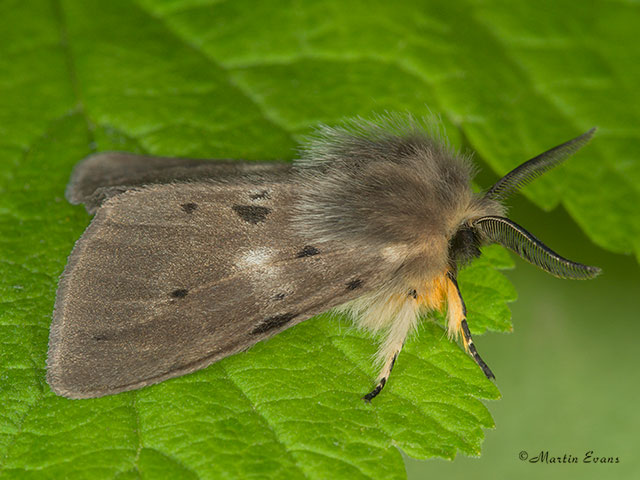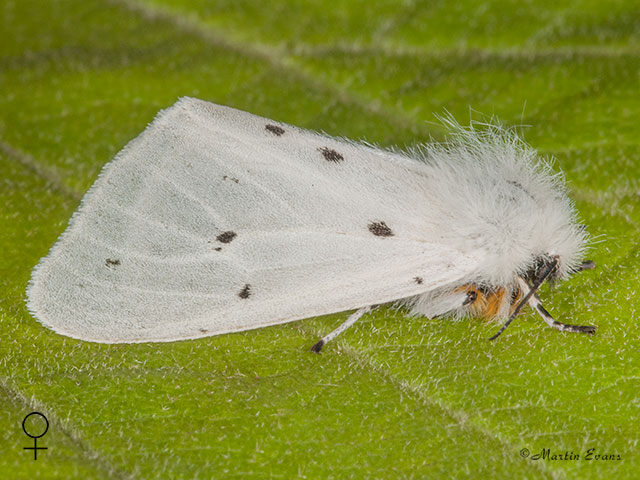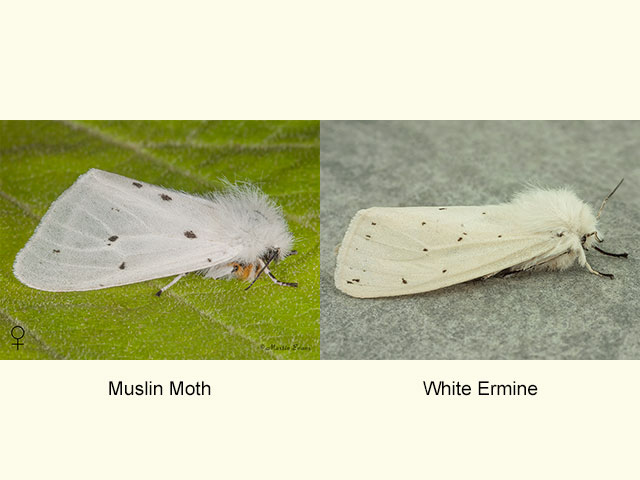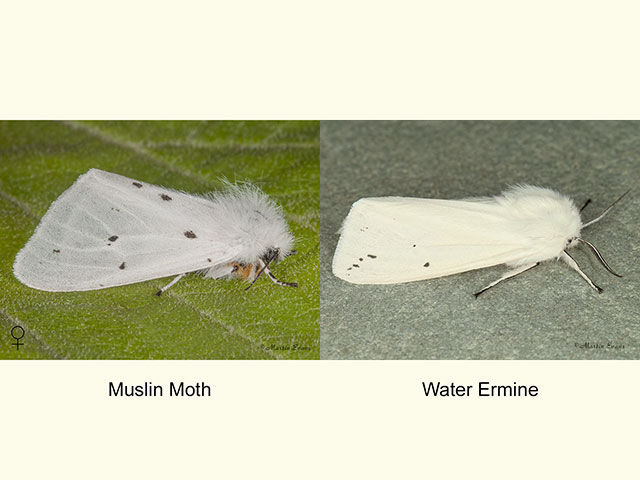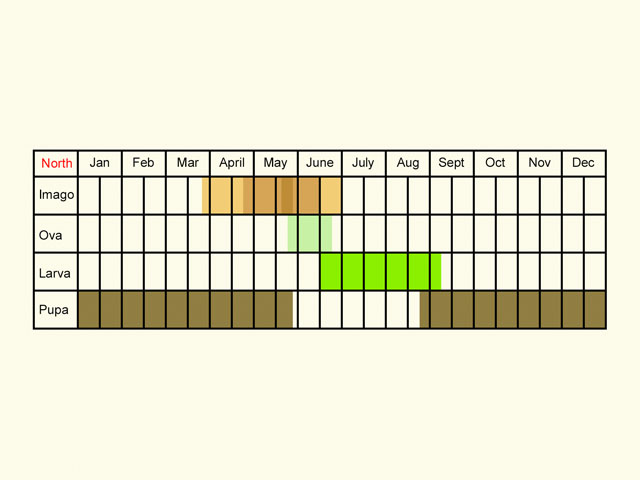Erebidae
72.022 Muslin Moth Diaphora mendica (Clerck, 1759)
Common
Similar species: The grey male Muslin Moth is unlikely to be mistaken for other ermine moths, although the Irish form is usually cream or buff rather than grey with a unique pattern of spots. The white female is superficially similar to Water Ermine Spilosoma urticae although that species is on average larger (18 to 21mm), has opaque rather than slightly transparent wings and has a yellow-orange rather than a white abdomen.
Forewing: M 14 to 17mm, F 17 to 19mm
Habitats: Open woodland, hedgerows, downland, sand-dunes, wasteground, allotments and gardens.
Habits: The male comes to light often late at night or in the early hours of the morning. The female is active during the day and flies in sunshine.
Foodplant: The larva feeds on Dandelion, Red Dead-nettle, docks, Common Chickweed, plantains and many other low growing plants. It has also been found and reared on Aspen and Apple. It pupates in a cocoon in the leaf litter.
On the European mainland it has also been recorded feeding on Hedge Woundwort, dead-nettles, Tansy, Purple Loosestrife, balsams, stitchworts, bedstraws, clovers, oraches and willows.
